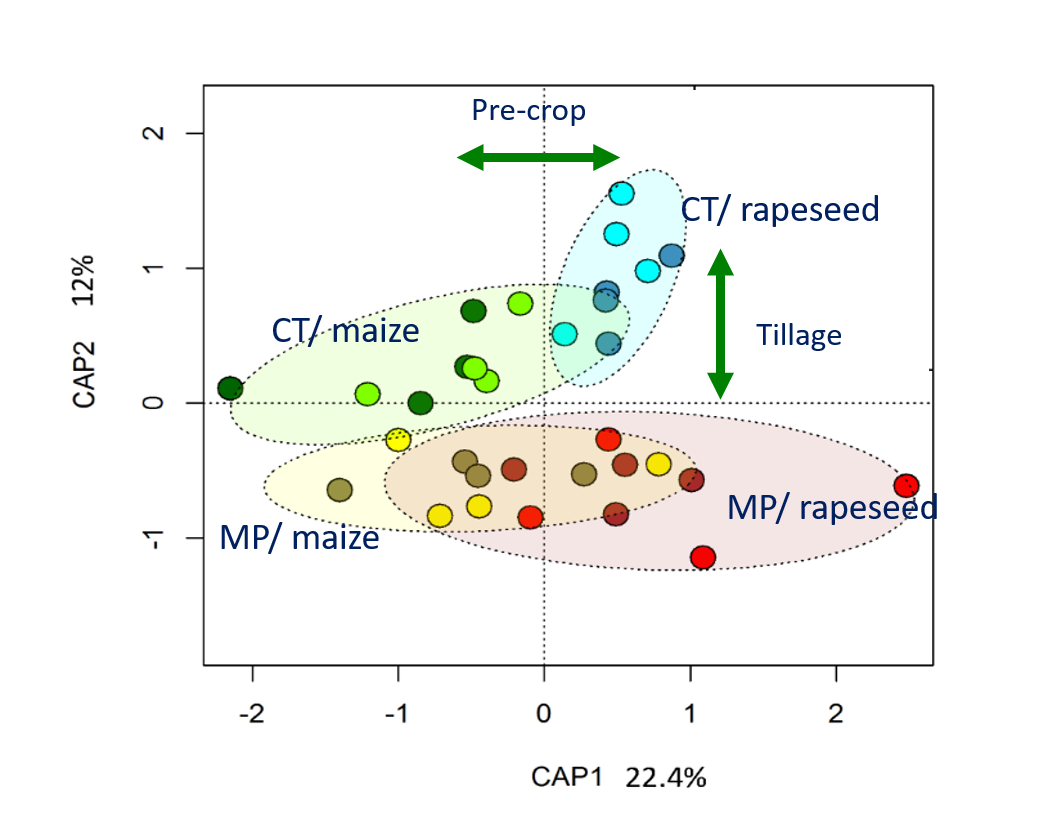Prokaryotic communities in LTE soils
Impact of long-term agricultural management practices on soil prokaryotic communities
Published in ScienceDirect
AuthorsBabin et al. (2019) Science Direct 129:17-28
Doreen Babin1*, Annette Deubel2, Samuel Jacquiod3,4, Søren J. Sørensen3, Joerg Geistlinger5,Rita Grosch6, Kornelia Smalla1
- Julius Kühn-Institut, Federal Research Centre for Cultivated Plants (JKI), Institute for Epidemiology and Pathogen Diagnostics, Braunschweig, Germany
- Anhalt University of Applied Sciences, Department of Agriculture, Ecotrophology and Landscape Development, Bernburg, Germany
- University of Copenhagen, Department of Biology, Section of Microbiology, Copenhagen, Denmark
- Agroécologie, AgroSup Dijon, INRA, Univ. Bourgogne Franche-Comté, Dijon, France
- Anhalt University of Applied Sciences, Institute of Bioanalytical Sciences (IBAS), Bernburg, Germany
- Leibniz-Institute of Vegetable and Ornamental Crops (IGZ), Department Plant-microbe Systems, Großbeeren, Germany
Soil microbial communities are important for soil functioning and crop health. In this paper we tried to understand the impact of agricultural management practices (tillage, fertilization intensity, pre-crop) on the structure and functions of the soil prokaryotic community. We compared mouldboard plough (MP) vs. cultivator tillage (CT); standard nitrogen fertilization intensity with application of growth regulators and fungicides (Int) vs. reduced fertilization without growth regulators and fungicides (Ext); maize (WW1) vs. rapeseed (WW2) preceding the actual winter wheat culture. Soil samples were taken in 2015 at harvest of winter wheat in a long-term field trial in Bernburg (Germany) established in 1992. We extracted total community- DNA from soils for structural and functional profiling of prokaryotic communities based on 16S rRNA gene sequences.

Similarity of prokaryotic community compositions in soils differing in precrop, tillage practice and fertilization intensity history. WW1- winter wheat after maize, WW2- winter wheat after rapeseed, MP- mouldboard plough tillage, CT- cultivator tillage, Ext- extensive N-fertilization without fungicides and growth regulators, Int- intensive N-fertilization including fungicides and growth regulators. (Image: JKI)
Our main results were:
- Tillage practice and the pre-crop affected the composition of prokaryotic communities, whereas the overall influence of fertilization intensity on soil prokaryotes was marginal (see Figure).
- Several microbial responders, with potential plant beneficial or pathogenic traits, to tillage and pre-crop were identified. For example, Sphingomonas and acidobacterial order Gp4 were enriched by MP whereas members of the archaeal ammonia-oxidizing genus Nitrososphaera were enriched by CT tillage.
- Compared to extensive fertilization, intensive fertilization resulted in higher abundances of bacterial but not of archaeal amoA genes important for ammonia oxidation.
This study suggested that long-term farming strategies shape the soil prokaryotic community, which should be considered when evaluating agricultural management strategies regarding sustainability, soil health and crop performance.